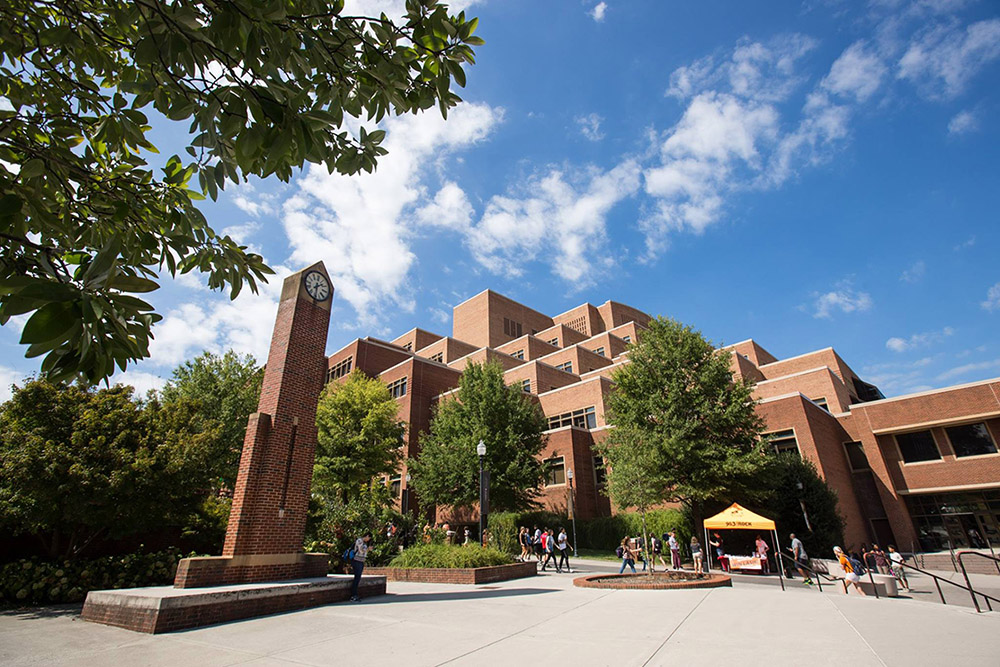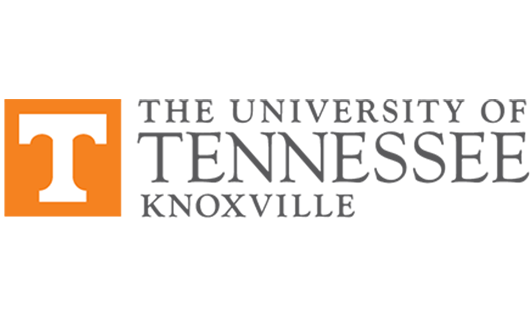
“Social Studio is one of the most powerful tools out there.” - Professor Courtney Childers, University of Tennessee
UT Knoxville uses Social Studio to Build Innovative Social Media Courses
It’s a distinction no school wants: The University of Tennessee, Knoxville was consistently included in lists of the ugliest campuses nationwide. But with a new beautification project underway, the university is changing that perception.
Beautification isn’t a smooth process, though. In the short term, it brings road closures, increased traffic, and mounds of dirt and construction materials. That led to increased social media chatter about the university’s unappealing appearance.
“We wanted to change the tone of the conversation,” says Rebekah Winkler, the university’s Social Media Manager. So the university’s Office of Communications and Marketing teamed with Professor Courtney Childers’ social media class to highlight new buildings, the preservation of older buildings, its LEED certification, and beautiful areas around campus.
The social media class meets in the Adam Brown Social Media Command Center, an innovative facility that puts the university at the forefront of social media education. The Command Center is powered by Salesforce’s Marketing Cloud and gives students, faculty, and staff access to Social Studio, the one-stop solution for social media teams to listen, analyze, engage, and publish to various channels using powerful marketing tools.
Using Social Studio, the class monitored what students, publications, and others were saying about the campus. Then they crafted a strategy to emphasize the benefits of the beautification and the beauty already inherent on campus. That strategy included a photo scavenger hunt for picturesque locations around the hilly campus and inviting publications to campus to re-evaluate the aesthetics. And they created the hashtag #beautiVOL—playing off the school’s “Volunteers” nickname—so students and the university could tag their beautiful images in a unified way.
“The university has posted a lot of great photos to that hashtag, but it’s the students sharing it with their followers and their audiences that really makes the difference, because they’re our influencers,” Winkler says.” Other students and prospective students would rather see their content coming from students than just coming from us. It’s more powerful.”
Rare opportunities for students
#beautiVOL isn’t the only project to come out of the Social Media Command Center. Students use it to research for class projects. During the 2016 elections, the political communications class used Social Studio’s analysis function to monitor conversations about the candidates, even tracking engagement during the debates in real time. The social media class worked with local clients—like the Office of Communications and Marketing—to devise strategies to increase engagement.
Frequently, those strategies were adopted by the clients, such as when the university’s College of Education, Health, and Human Sciences outreach program adopted the class’s recommendations for increasing awareness about the “Red Zone,” the first 30 to 60 days of the fall semester when it’s most dangerous for students because of the increased number of freshmen on campus and the increased inclination to participate in risky behavior.
Kalee Simpson took social media during her senior year and worked with a team to craft a social media plan for Dollywood Parks. The plan included situation analysis, deep research into Dollywood’s existing social media efforts, and what it could do to increase engagement and interactions. They presented the plan to Dollywood, which accepted the campaign as part of its regular social media efforts.
That experience with Social Studio gave Simpson skills and real-world experience that other advertising students don’t get. “Other students haven’t actually been able to apply real-world situations into their schoolwork. It’s been made-up scenarios, and not accurate to what is happening in today’s world.”
It paid off when she applied for internships: She snagged two prestigious ones, as the first ever social media intern with Scripps Networks and as a public relations intern for Universal Orlando. Now she’s a graduate assistant at the University of Central Florida working marketing and social media for the university’s National Consortium for Academics and Sports.
“Having worked with Social Studio has given me an advantage over other people applying for the grad program and the internships,” Simpson says. “The decision-makers could tell I had done my research and had utilized Social Studio and other programs that other students didn’t even know existed, or know how to maneuver and manipulate.”
Childers, who is Executive Director of the Command Center, says she’s been contacted by several graduates who discovered after being hired they either got the interview or the job because they had Salesforce Social Studio experience on their resume.
“Having access to Social Studio gives students phenomenal real-world, real-time tools to learn more about what a career in social media might look like,” she says. “We know realistic experiences translate into internships and job placement.”
Talking their way off the list
“Social studio is one of the most powerful tools out there,” Childers says. “We love that it gives our students, faculty, and staff members access to all three prongs of the platform. It gives our students a really solid vision about how teams can work together, and all the different day-to-day functions of social media strategy.”
The use of Social Studio is having an impact on the university, as well. For one thing, it’s no longer on those ugliest campuses list.
Winkler attributes that almost solely to the #beautiVol campaign. “I know that our media relations staff wanted to reach out to some of the university-specific publications and invite them onto campus, but they haven’t come yet,” she says. “So, I owe it all to social media, and the social media that the students have done themselves.”
Download the University of Tennessee, Knoxville case study
